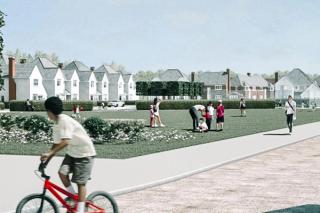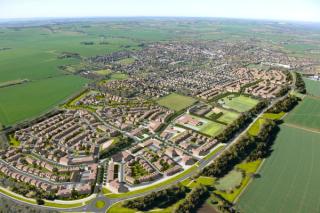
Planning support for Kilnwood Vale
- Client Name
- Crest Nicholson
- Location
- UK

Challenge
In March 2010 Horsham District Council granted outline permission to Crest Nicholson for the development of 2,500 homes at Kilnwood Vale. The proposals incorporate a new railway station, neighbourhood centre and an extensive network of new parks, greenways and other recreational facilities.
Construction is well underway on engineering operations associated with landfill remediation and associated infrastructure and the first of the 291 dwellings in Phase 1 are built and occupied.
Solution
SLR's project input started in 2003. Initially we helped to make Kilnwood Vale one of the preferred sites for development in Horsham District’s emerging Development Plan by demonstrating that it was possible to build houses on the inert landfill which occupies approximately one third of the site. We addressed the outstanding permitting issues for the landfill, and advised on practical solutions for dealing with contamination and stabilising the fill for development.
With the site allocated for development, the client then pushed forward with an outline application for the whole development and a detailed application for Phase 1.
Impact
Our technical input, advice and recommendations informed the evolution of the outline and detailed masterplan.
SLR shaped the development parcels and defined the character and structure of the public realm, as well as designing the green infrastructure in detail.
SLR consulted on: flood risk and surface water management; maximised biodiversity across the site through the ecology team; and, looked at heritage issues associated with listed buildings.
We undertook a range of statutory consultations, and managed the EIA process. Once construction was ready to commence, SLR also developed a materials management plan to enable successful reuse of around 175,000m3 of site won excavated material across Phase 1 of the development, in accordance with the CL:AIRE Code of Practice.

